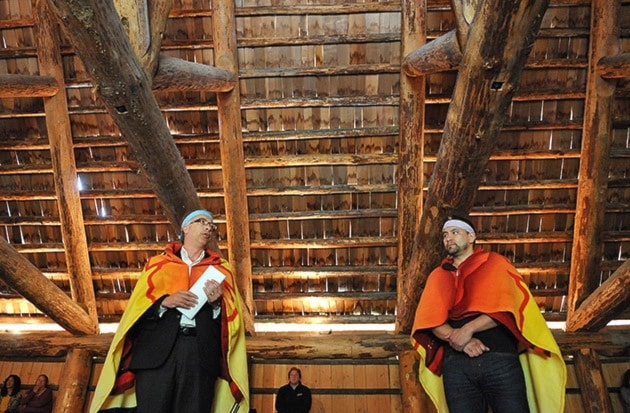Imagine a one-stop shop that allows consultation with local First Nations communities through a single point of contact.
A new agreement announced in Chilliwack last week is geared to making consultation and engagement with 14 Sto:lo First Nations more streamlined when it comes to land and resource decision-making in the Fraser Valley.
The latest strategic engagement agreement (SEA) announced Thursday was between the province and 14 First Nations based in Chilliwack and across the Fraser Valley.
The Sto:lo SEA builds on a successful 24-month pilot project launched to improve relationships between the parties, in part by cutting down the steps required to consult.
The B.C. government chipped in $2.1 million for the three-year the agreement, which covers the breadth of Sto:lo territory in the Fraser Valley.
Both local MLAs welcomed it.
“This partnership is a way to move forward,” said Chilliwack MLA John Martin. “Our goal is to create the kind of economy that brings prosperity to all our communities and provides them with opportunities.”
There was solid support from B.C. for the SEA.
"I firmly believe that working in partnership is the best way to ensure meaningful participation in resource management for First Nations," said John Rustad, minister of Aboriginal Relations and Reconciliation, in a release. "I am delighted to see all the hard work from the pilot project grow into this significant multi-year agreement."
It's going to make a difference to the individual Sto:lo communities, as well.
"Prior to the pilot project, many of the Sto:lo communities and offices would be flooded with referrals," said Otis Jasper, chair of the Sto:lo First Nations SEA Board. "That created chaos since there was such an overwhelming number."
The SEA actually marks the first time that Sto:lo communities from both political organizations, Sto:lo Nation and Sto:lo Tribal Council, have worked together "as a collective" since about 2004, he noted.
"It's not without its challenges, but we all managed to be at the table for this, so it's positive in that light as well," Jasper said.
The pilot project started in 2012 and is the basis of the new SEA. It saw the establishment of People of the River Referrals Office and a central office at the Coqualeetza site that make up the "one-stop" approach to referrals. It takes up an entire floor of the Sto:lo Research and Resource Management Centre.
"Our experience with the pilot showed that dialogue, ahead of any approval, was a much more efficient and effective way to engage compared to any last minute on-the-ground attempts. We now have our own bureaucracy, but in a good way."
It naturally speeds things up.
"It helped us get more organized in terms of working with industry so we could address any issues prior to problems arising," Jasper said. "It will help avoid delays and work stoppages, and create an opportunity for us to get involved on a government-to-government basis."
It marks the eighth such agreement to be inked with First Nations in B.C.
"I think it will help us keep pace with industry, and put us on better footing with the province," Jasper said.
It ensures applications are referred to the "appropriate signatory First Nation" within timelines.
The 14 Sto:lo groups involved included: Chawathil First Nation, Cheam First Nation, Leq'á:mel First Nation, Scowlitz First Nation, Shxw'ow'hamel First Nation, Skawahlook First Nation, Sumas First Nation and the Ts'elxwéyeqw Tribe, which signed on behalf of the Aitchelitz Band, Shxwhá:y Village, Skowkale First Nation, Soowahlie First Nation, Squiala First Nation, Tzeachten First Nation and Yakweakwioose First Nation.
Some are in the treaty process, while others are not.
The local SEA marks a turning point in their relationship with B.C., Jasper noted.
Aside from Sto:lo SEA board chair, Jasper is also a governance and negotiation specialist with Castlemain Group, which does the same type of work for other First Nations communities in B.C.
"Since the late 1800s, the province has maintained a position of denial with regard to aboriginal rights and title. That's something that's been well documented.
"But here we are, years down the road, and we're at a bit of a turning point. We are able to put these issues on the table. It's coming along, but it's a long process."
So is an SEA on a parallel level with treaty?
"It's not parallel to treaty agreements, but it's dealing with land and resource issues that would be also addressed to some degree in treaty."
The relationship between First Nations and local government may be a future topic of discussion raised with provincial officials, as well as environmental issues that are of concern.
"Developing a pilot two years ago and now a full-scale SEA speaks to the commitment of our combined leadership as Sto:lo from our multiple tribes to work together with the province on matters that are of great importance to all of our communities," said Jasper.
jfeinberg@theprogress.com
Twitter.com/chwkjourno
